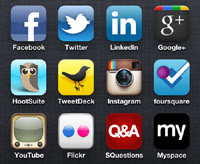 |
| From Flickr user Sean MacEntee. |
For a little cash - usually, $5, $10, $20, or a little more, depending on how many Facebook fans you have, Facebook will make sure your post is seen by a larger percentage of your fans and their friends. Right now, if you have more than 400 fans on your page, you can promote any post for three days.
Why you should try it:
An average Facebook post will be seen by about 16% of your fans. One of my clients is doing better than that - their average post is seen by about 30% of their fans. They have a small, but very engaged community.
When we spent $10 to promote a Facebook post, we went far beyond that - our promoted post reached six times that many people - more than twice the amount of people than our total fan base. Many more people saw and shared our promoted post than usual.
What's more, we saw a doubling of engagement in the 10 days after our promoted post, gained some new fans, and we continue to see a 30% lift in engagement on Facebook, several weeks after the promoted post.
What to promote:
I'd recommend testing something entertaining - a video, photo gallery, game, or something else fun. Inactive fans - those who haven't interacted with you in a while - are going to see this post and you want to give them a reason to rejoin your active fan base.
But Beware:
Yes, we only spent $10 and got some encouraging results. But those $10 posts add up. Make sure you're budgeting appropriately - you don't want to be spending money every few days to promote another post unless you're seeing good results. Your priority should be generating quality, engaging content to serve your social media audience - once you have great content, then work on promoting it.
Let me know how this works for you. I'm looking forward to hearing your stories!
Does your Facebook strategy need a bit of a facelift? Let me know. I can help.
Related Posts
You say it's your birthday? One more way to leverage your Facebook presence.
Connecting Facebook and In-Store Marketing












